In this article, we’ll help you educate your children or students about measured screen use.
It’s a well-know fact that nowadays young people use screens more and more, which is why we wanted to give you some tips and tricks to accompany your children or students.
Among other things, you will find:
- a theoretical approach on screen use recommendations based on age. These recommendations come from the American Academy of Pediatrics. We will also look at the effects of screens on children, with different types of use and the positive and negative effects,
- a practical exercise with tips and practical cases to limit screen time,
- solutions to compensate for overexposure to screens, with the COCO THINKS and COCO MOVES application, which has the particularity of imposing a sports break every 15 minutes of screen time.
Screen Time Recommendations for Children
When we talk about screen time recommendations, we must know that screen time is the entire use that the child can make of screens. When we talk about screens, we are talking about television, smartphones, computers, tablets or consoles; in other words, all the screens that children may have around them during the day. This means that if he uses the phone for 15 minutes in the morning, then watches 30 minutes of television in the afternoon and plays 10 minutes on the console in the evening, then add up all the screen time used during the whole day. Often as parents, you are not aware of this screen time.
If we look at the recommendations for the use of screens by age, we see that before the age of 3, it is recommended not to use screens. This is very important because it is an age when children develop their cognitive functions and especially they have a great need to move and use their body to learn and discover. This is also very important at this age because the development of visual skills is still in formation. The visual stimuli he may receive in front of the television, such as blue light, may be too intrusive for a child of this age.
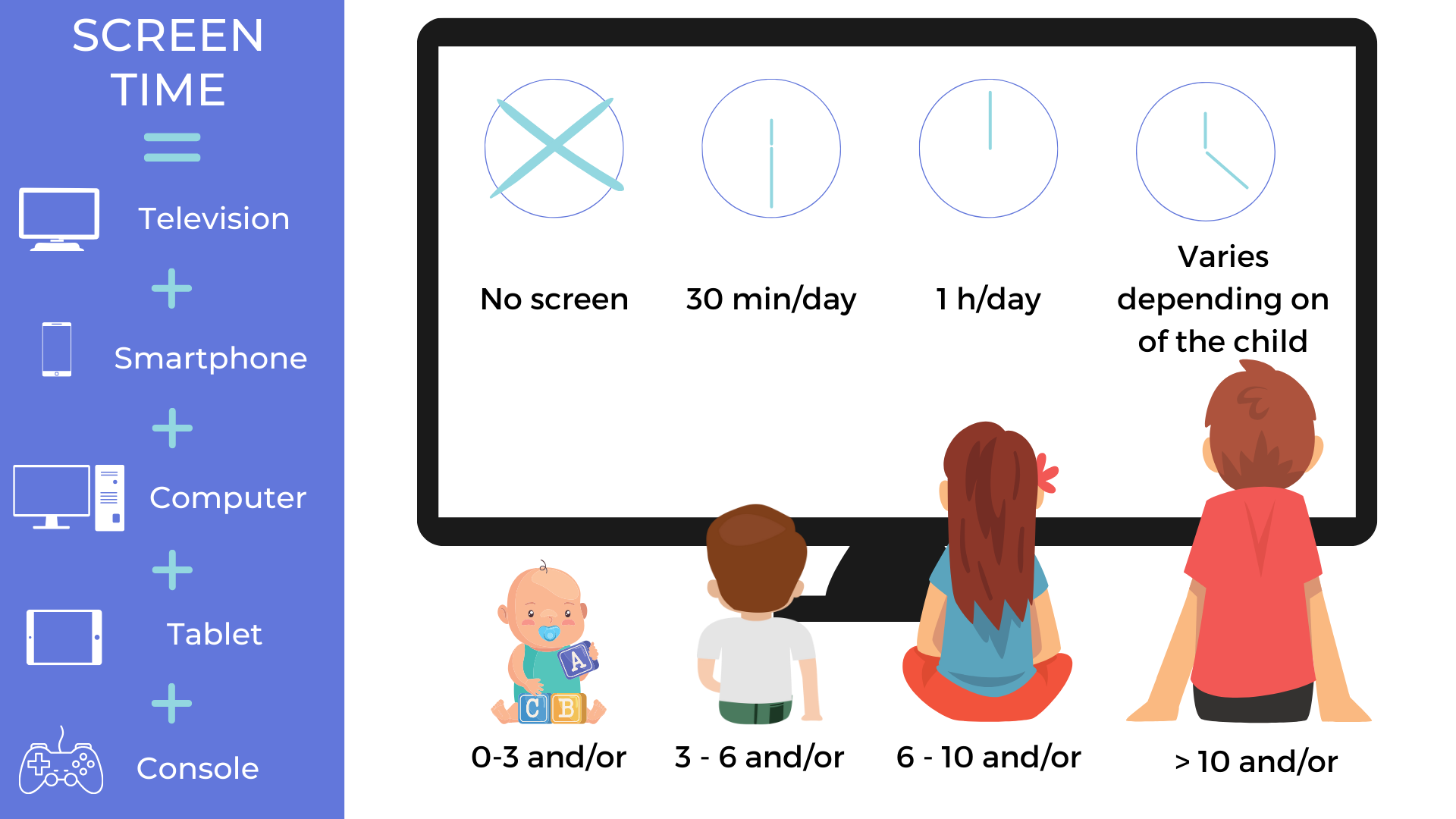
Screen time by age group
- No screens under the age of 2,
- Less than an hour a day for kids under the age 6,
- From 6 to 10 years old, try to keep it up to an hour (screen time for school related activities does not count).
After the age of 10, the time varies depending on the child. For example, we can see the effects that television has on the child and adapt the use. The TV can be used to go back to a quiet time, but if the child gets excited or overexcited in front of it, it is best to limit screen time.
However, it is important to keep in mind that every child is different, so you should adapt the use of screens depending on their response to it.
In the morning, it is advisable not to use screens, because they send a lot of stimuli which can decrease children’s attention. This can deplete their attention for the rest of the day. For example, at school, children will have a hard time listening to the teacher or will not be able to do their homework. They will not be able to pay attention to what is going on around them due to lack of attention.
This next tip can apply to all technologies, including those used in the classroom.
You should be aware that screens should not be used before a time when children will need to give their full attention, such as an exam. It is preferable to use screens before recess, which is a time where they can use their energy and their body.
In the evening, you should not use screens before going to sleep, because they emit blue light that will influence the sleep-wake cycle and production of melatonin (one of the effects of screens). It is important for parents to know this rule because it can lead to irregularity in their childrend’s sleep schedule and have an impact on their fatigue and therefore a decrease in attention in learning.
It is advisable to stop using screens at least one hour before bedtime to allow the children’s brains to erase the effects of screens such as blue light and to use them preferably on the way home from school or just before dinner or before a quiet moment.
Nowadays, screens are very present in the daily life of children. They are surrounded by all sorts of technology (televisions, smartphones, tablets or video games) on a daily basis, so they are very comfortable using technology because they are used to it from a young age.
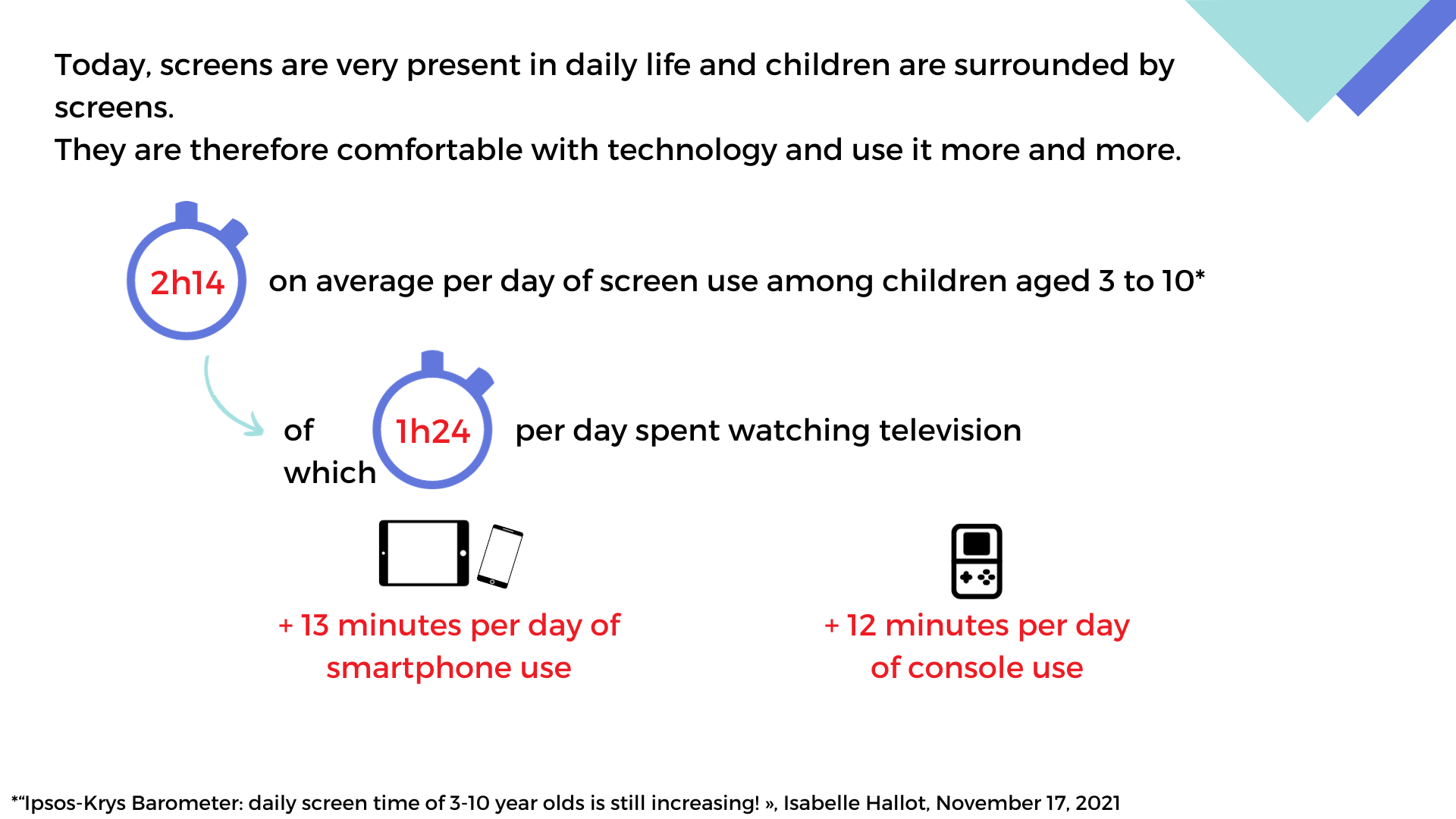
According to the NIH, “Health experts say screen time at home should be limited to two hours or less a day.”, whereas today, children aged 3 to 10 use screens for an average of 2 hours and 14 minutes per day, which is way above the recommended amount.
The most used screen is television with an average of 1h24 per day. Other screen time is constantly increasing with more than 1;5 hours on the computer and over an hour spent on consoles. With this increase in screen time, it is important to educate not only children but also parents and teachers.
Advantages and disadvantages of screen use for children
We are often confronted with all the negative effects that screens can have on children. But screens can also have many benefits, if used properly. Indeed, side effects and disadvantages are mostly related to the misuse of screens.
Keeping in mind that technologies can have negative effects on children when misused, it is also important to point out the advantages of screens:
- they can improve cognitive functions by offering specific activities adapted to the age of each child. However, it is important to ensure that the child is active behind the screen, and therefore choose interactive activities to stimulate the child’s intellect, get them to think and find solutions,
- they can help children recognize their emotions, like movies or cartoons.
Technologies can create bonding moments between friends or in the family.
- Some technologies can be used as compensation tools for children with disorders or difficulties (learning disabilities, ADHD…).
Here are some disadvantages of excessive use of screen:
- Technologies can cause visual fatigue.
- Blue light affects the sleep patterns of children,
- They can lead to a Early and excessive exposure to screens (EEES), which results in fixation, isolation…
- Passive use of screens can create developmental delay.
- After using the screen, motor agitation can be seen as the child must release the accumulated energy.
Tips for teaching children to use screens properly
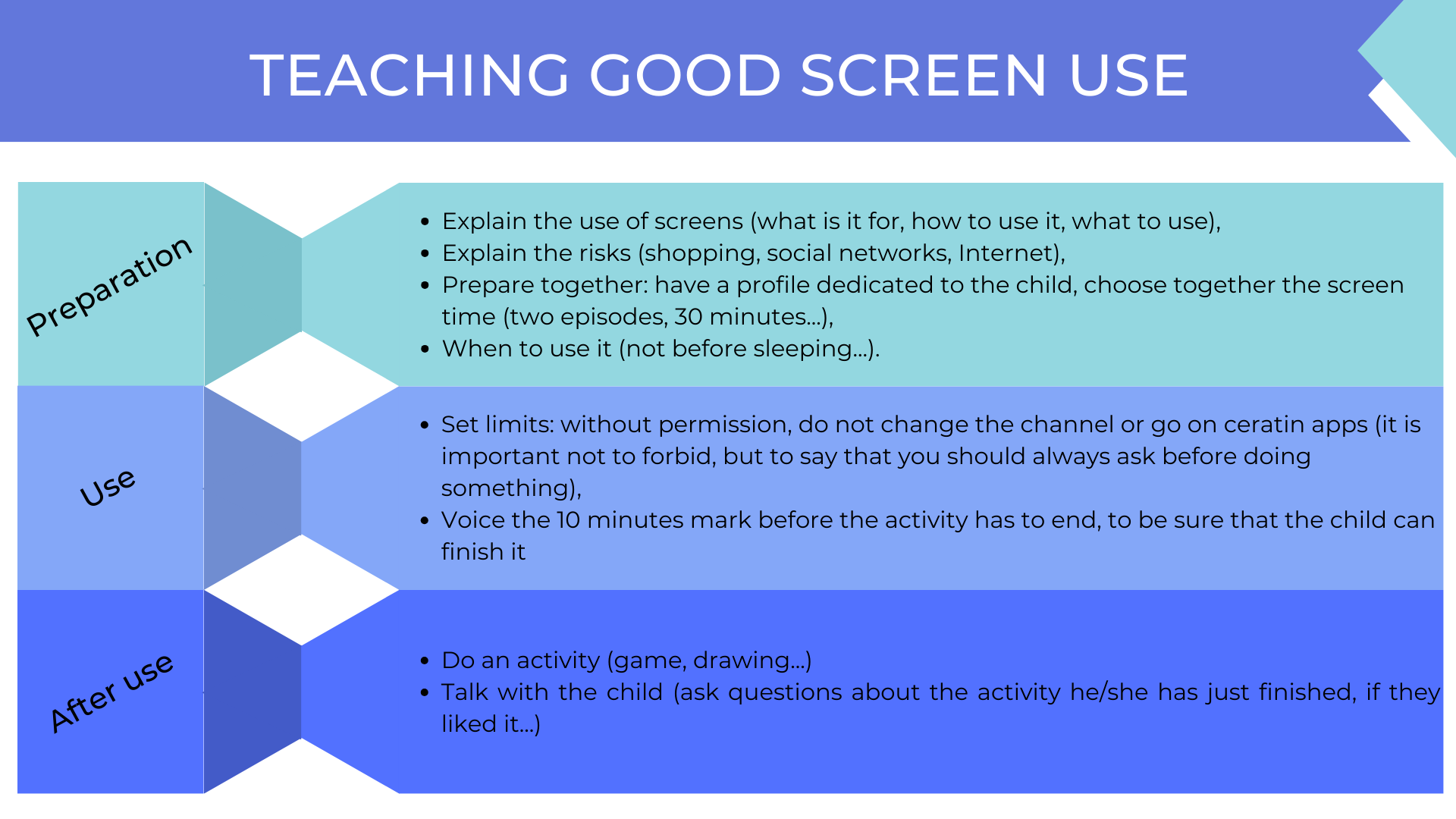
Before using screens
- Explain screen usage (what it’s for, how to use it, what to use),
- Explain the risks (purchases, social media, internet),
- Prepare for use together: create a dedicated profile for the child, jointly decide on screen time (two episodes, 30 minutes…),
- Establish when to use it (not before bedtime…).
During screen time
- During screen time, Set boundaries: without permission, do not change channels or access parental messages (it’s important not to impose restrictions but to emphasize the need to ask before doing anything),
- Give a 10-minute warning before the activity ends to ensure the child can finish it without creating frustration.
After screen time
- Engage in an activity (play a game, do some drawing…),
- Have a conversation with the child (ask questions about the activity they just did, if they enjoyed it, what they learned, …)
Case Study #1: My child won’t stop watching TV.
What can I do?
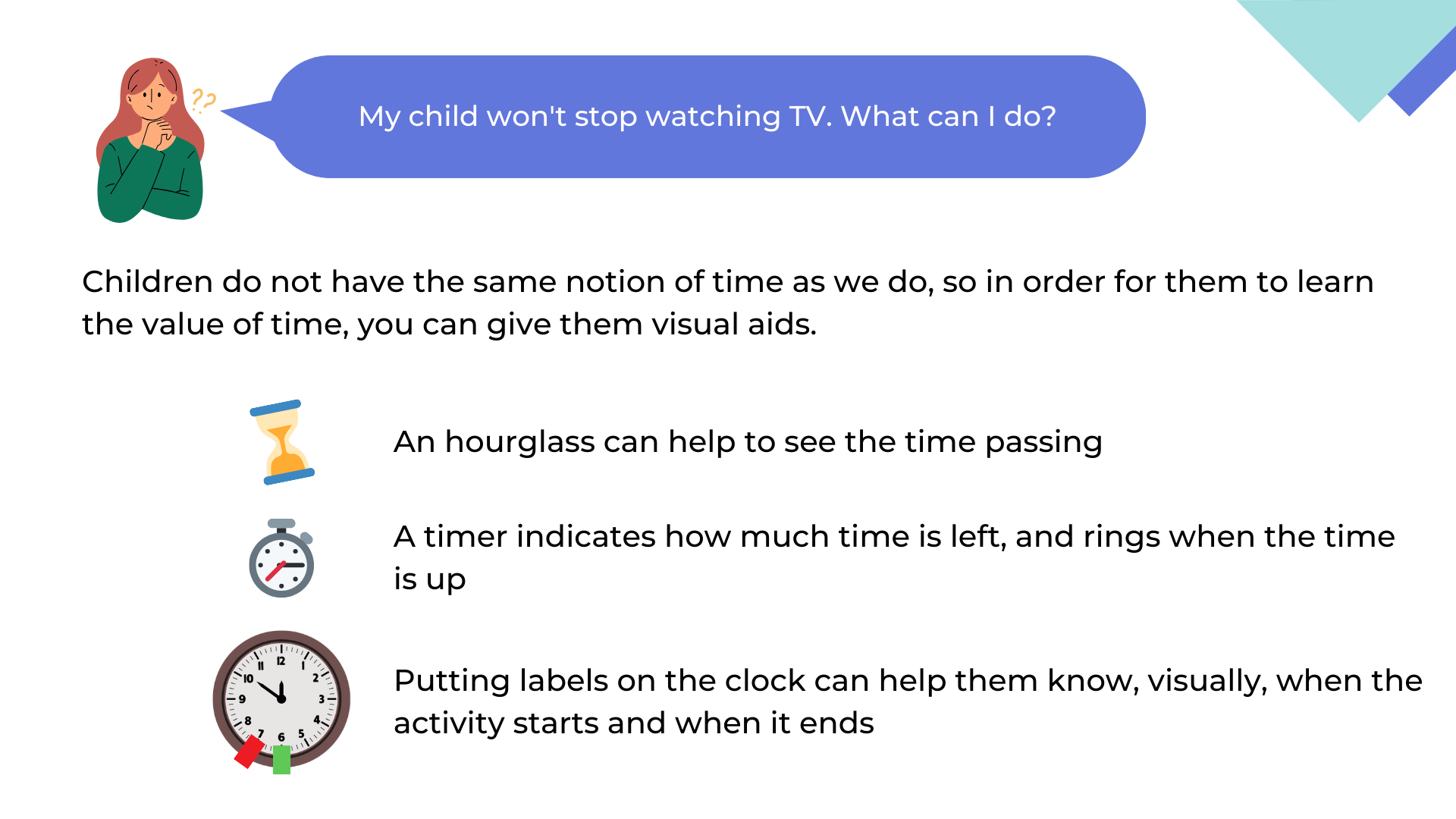
Children do not have the same notion of time as we do, so we must give them visual aids.
There are several creative and effective ways to achieve this.
- Firstly, consider the use of an hourglass. An hourglass is a tangible representation of the passage of time. Watching the grains of sand flow from one chamber to another offers children a captivating and concrete way to perceive the duration of an activity. It transforms the abstract concept of time into a visual, almost magical experience, helping children become more aware of its passing.
- Another invaluable tool is the stopwatch. The stopwatch not only displays the elapsed time but also serves as a reliable countdown mechanism. As the numbers dwindle, children can vividly witness the time left for a particular task or activity. The added benefit of an audible alert, such as a ring or beep when time is up, offers a clear and engaging signal that the allocated time has concluded, promoting a sense of structure and accomplishment.
- Furthermore, incorporating labels onto traditional clocks can be exceptionally helpful. By attaching labels that signify the start and end times of various activities, children can quickly and easily recognize the transitions between different tasks. This visual cue empowers them to take ownership of their schedules, fostering a sense of responsibility and autonomy in managing their time.
In conclusion, these visual aids – the hourglass, stopwatch, and labeled clocks – act as essential tools in bridging the gap between a child’s unique perception of time and our adult understanding. They not only make the abstract concept of time tangible but also encourage children to develop valuable time management skills, enhancing their overall learning experience and fostering a deeper sense of responsibility and independence.
Case study #2: When my child is in front of a screen, he seems to be in another world.
How can I avoid this?
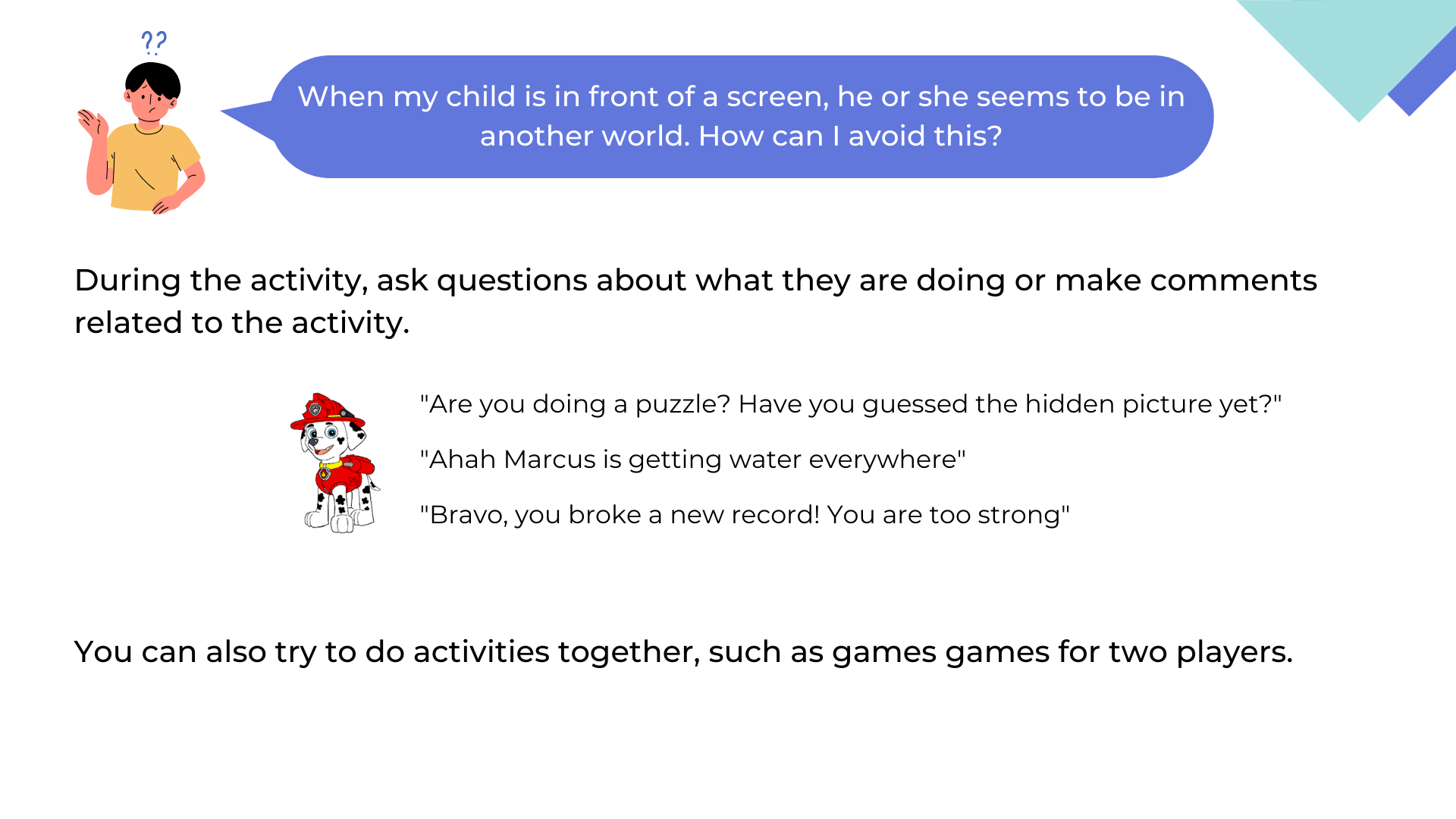
Engaging with children during their activities is a wonderful way to foster a deeper connection, encourage their curiosity, and create a supportive environment for their growth and development. While they are immersed in an activity, taking the time to ask questions and offer relevant comments can have a profoundly positive impact.
For instance, when you notice a child’s exceptional effort or achievement, acknowledging it with enthusiasm can be highly motivating. Simple phrases like, “Bravo, you broke a new record!” not only celebrate their accomplishments but also boost their self-esteem. Such positive reinforcement can inspire them to persevere and strive for excellence, instilling a sense of self-confidence and determination.
Furthermore, engaging in a meaningful dialogue about the activity itself can be both informative and enjoyable. For instance, if a child is solving a puzzle, you can ask questions like, “Are you doing a puzzle? Have you guessed the hidden picture yet?” This not only demonstrates your interest in their interests but also encourages them to share their thoughts and feelings, fostering effective communication and critical thinking skills.
Another way to engage with children is to actively do an activity together. Consider exploring 2-player games, such as the 2-player mode of programs like COCO THINKS and COCO MOVES. Sharing these experiences promotes collaboration and healthy competition, offering valuable lessons in teamwork, problem-solving, and sportsmanship. It also provides an opportunity for you to to bond and create lasting memories and make learning and play even more engaging.
Case study #3: How can I teach my son to be organized and understand when he can and cannot use the tablet?
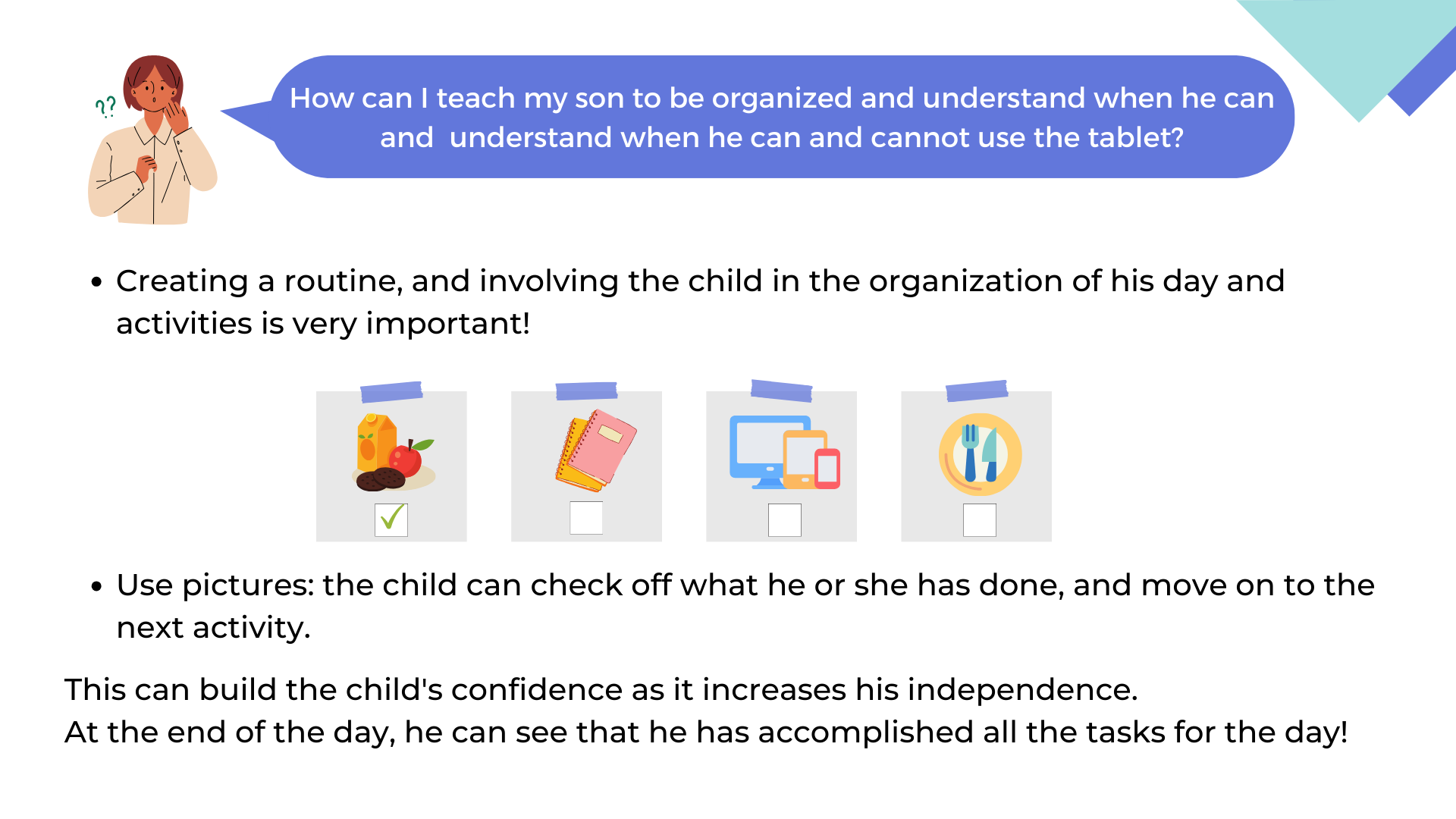
To facilitate a child’s development and promote a sense of autonomy, it’s crucial to implement certain strategies. Here are some valuable tips:
- Creating a structured daily routine is of utmost importance. This routine provides children with a clear sense of what to expect each day. Moreover, involving the child in the organization of their day and activities is a powerful way to instill a sense of ownership and responsibility. It empowers them to make choices and decisions within the established framework, promoting self-determination and self-discipline. The predictability of a routine also offers a comforting sense of security, reducing anxiety and enhancing their overall well-being.
- Using visual aids can be an exceptional tool for helping children grasp the concept of time and the progression of their daily activities. You can use pictures or checklists that represent the tasks or activities planned for the day. As the child completes each item, they have the satisfaction of checking it off, which creates a tangible sense of accomplishment and progress. This visual representation not only enhances their understanding of their daily schedule but also instills a sense of control over their own time and responsibilities.
By consistently following these practices, you’re not only contributing to the child’s personal growth and development but also bolstering their self-esteem and confidence. At the end of the day, when they can see that they have successfully completed all the tasks for the day, it reinforces a sense of achievement and builds their belief in their ability to manage their daily life. This, in turn, lays the foundation for lifelong skills in time management and self-reliance.
Key words to accompany your children in their use of technology:
- Dialogue: Talk to your child, explain what can and cannot be done and why. Choose together for how long and when to use the screens.
- Sharing: Encourage family exchanges because it is by sharing a good moment together that children will not isolate behind a screen. You can invite them to have family meals, take them on walks… you can talk about the past day or the activities they did with their screens.
Solutions for overexposure to screens
Parental control
According to a Pew Research Study on “Parenting children in the age of screens” by Brooke Auxier, Monica Anderson, Andrew Perrin and Erica Turner on July 28, 2020:
– 72% of parents use parental controls to restrict how much their child uses screens,
– 68% of parents say they “sometime feel distractedn by their own phone when spending time with their kids”.
The important thing is to communicate with children, not just create boundaries.
Smart applications: COCO THINKS and COCO MOVES
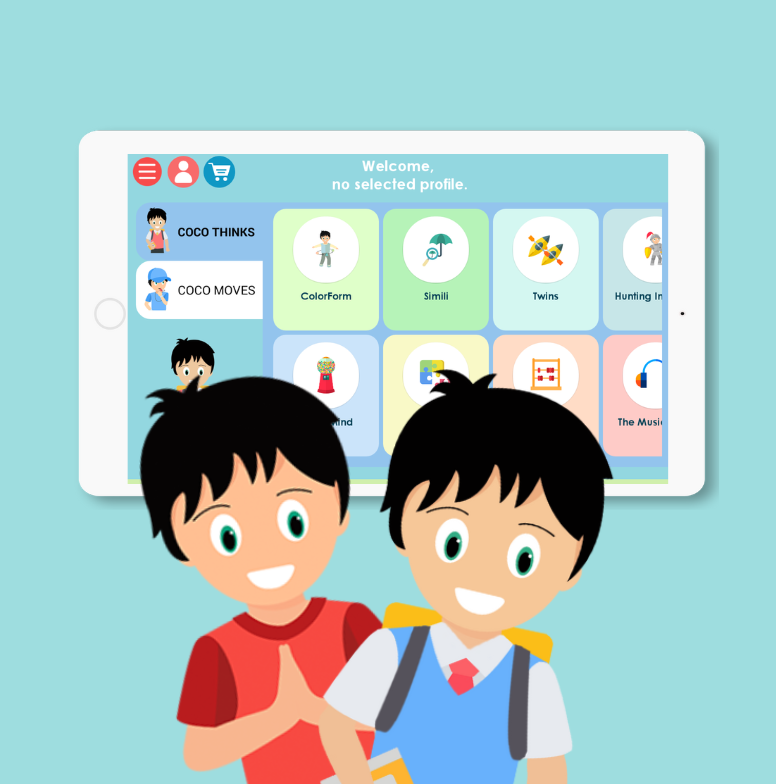
An anti-addiction system for screens
- Over 30 educational games to train cognitive functions (memory, attention, language…) and to promote learning (math, literature, spelling…)
- A sports break after 15 minutes of screen time with 8 sports games to clear the brain.
- The child can return after a physical activity to an educational activity after having let off steam.

The benefits of a sports break
From the age of 5, children must do at least 1 hour of physical activity per day, including 30 minutes at school. The COCO THINKS and COCO MOVES sports break:
- respects the child’s need for movement,
- allows children to let off steam,
- fights against the sedentary lifestyle,
- motivates children to stay active.
A 2-player mode that also allows the tablet to be used in mediation, so that the child is not left alone behind the tablet.
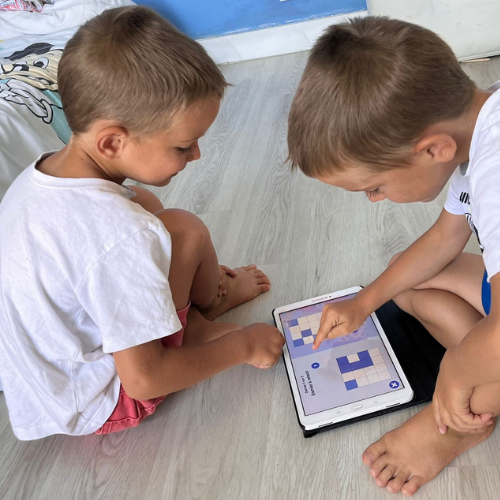
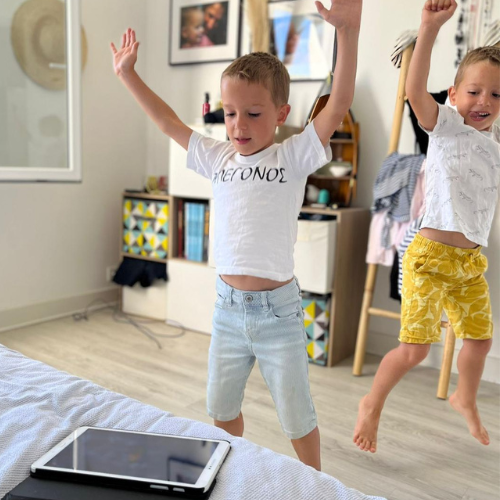

A FREE WEEK TRIAL
Going further:
Workshop Tools to Raise Awareness on Screen Use – Free Resources
Online training to teach students to use screens in moderation
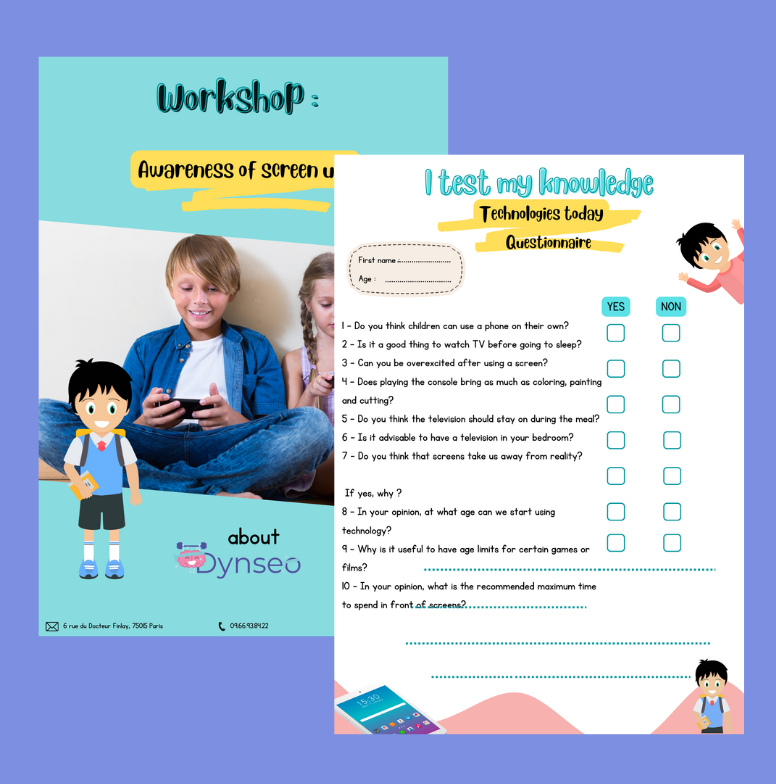
Other articles that might interest you:
Supporting children with autism
Dynseo proposesSUPPORTING CHILDREN WITH AUTISM with COCO THINKS AND COCO MOVESDynseo and its team are very much...
Supporting DYS children with COCO THINKS and COCO MOVES
Dynseo proposesDYS disorders with COCO THINKS and COCO MOVESOur educational and pedagogical games program COCO THINKS...
Language development
Children communicate from birth with movements, crying, looking at each other or with smiles. After only a few months,...
Supporting children with Down Syndrome with Coco
Dynseo proposesDOWN SYNDROME with COCODown syndrome is a non-hereditary chromosomal abnormality that leads to the...
Supporting people after a stroke
Dynseo proposesStroke with CLINT, your brain training coachThe Dynseo team is very involved in helping people who have...
Supporting someone with Alzheimer’s
In this guide, we will detail how SCARLETT can be used for supporting someone with Alzheimer's. SCARLETT is a...
10 myths about the human brain you didn’t know
The brain is an incredible muscle, however there are many things we do not know, and what we do know is not always...
Using Digital Tools to Support Students with Special Educational Needs
Special Educational Needs (SEN) encompass a wide range of learning difficulties and disabilities that can hinder a...
Down Syndrome and Communication: Facilitating Interaction with Visual and Interactive Supports
When we think about Down syndrome, we often recognize it as a genetic condition that affects physical and cognitive...
How to Track Progress in People with Down Syndrome Using Digital Tools
Down syndrome, a genetic condition caused by the presence of an extra chromosome 21, affects approximately 1 in every...











